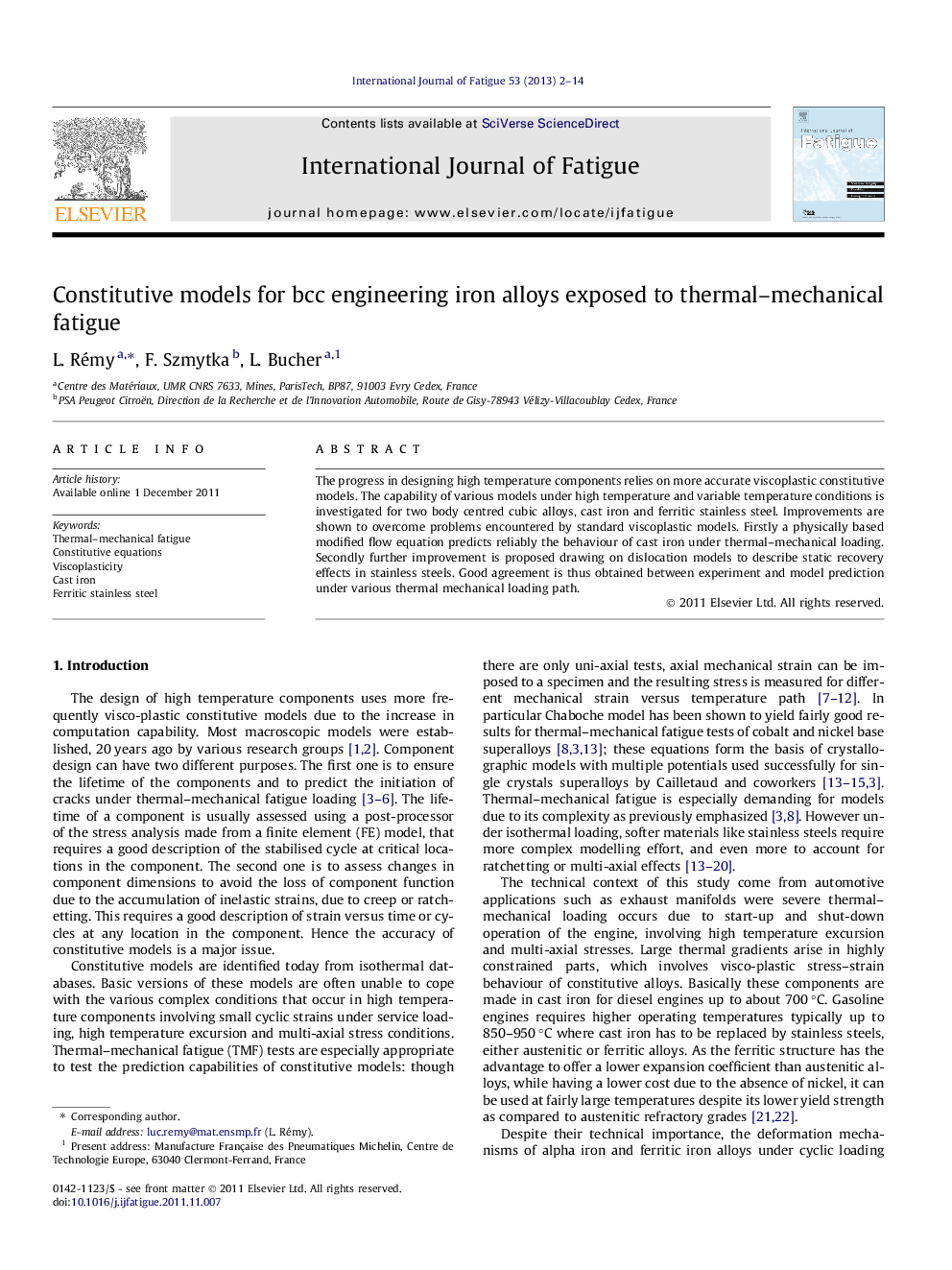| Article ID | Journal | Published Year | Pages | File Type |
|---|---|---|---|---|
| 777673 | International Journal of Fatigue | 2013 | 13 Pages |
The progress in designing high temperature components relies on more accurate viscoplastic constitutive models. The capability of various models under high temperature and variable temperature conditions is investigated for two body centred cubic alloys, cast iron and ferritic stainless steel. Improvements are shown to overcome problems encountered by standard viscoplastic models. Firstly a physically based modified flow equation predicts reliably the behaviour of cast iron under thermal–mechanical loading. Secondly further improvement is proposed drawing on dislocation models to describe static recovery effects in stainless steels. Good agreement is thus obtained between experiment and model prediction under various thermal mechanical loading path.
► Constitutive models are tested in high temperature and thermal mechanical fatigue. ► Two body centred cubic alloys cast iron and ferritic stainless steel. ► A physically based modified flow equation predicts the behaviour of cast iron. ► An enriched model with static recovery predicts the behaviour of stainless steel.
